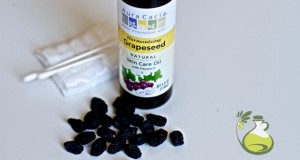
Photo credit: flickr
If we compare canola oil vs soybean oil we see they are vegetable oils full of unsaturated fats. They are liquid at a room temperature and in refrigerators. They are considered healthy oils in comparison with animal fat high in saturated fatty acids associated with bad cholesterol. However, consumers worry about genetic modifications that have been carried out to soybean and canola plants to raise yields. Let’s compare canola oil vs soybean oil.
Canola oil
Canola oil is extracted from the seeds of the canola plant. “Canola” stands for “Canadian Oil Low Acid”. This plant is a cultivar of rapeseed grown in the 1970s by the Canadian breeders. Rapeseed itself is not used for consumption because of the high percentage of erucic acid. As Wikipedia notes the level of erucic acid on canola oil is low and safe for human consumption. Canola oil has a very beneficial fatty acids composition. It is high in monounsaturated oleic acid and low in saturated fats. It contains omega-3 fatty acids not found in the majority of cooking oils. The smoke point of canola oil is high enough – 400°F, so the oil is perfect for almost all types of cooking. Canola oil is refined and deodorized, so it is neutral in flavor and taste and doesn’t add extra flavor to dishes.
YOU MIGHT BE ALSO INTERESTED IN: Pros and Cons of Grapeseed Oil vs Canola Oil
Soybean oil
Soybean oil is widely-used oil. If we compare the fat content of canola oil vs soybean oil we see that soybean oil also has omega-3 fatty acids (7%), but higher amount of saturated fat. Soybean oil has 24% of monounsaturated fatty acids and 54% of omega-6s. Soy oil smokes at 460°F (see Wikipedia) so it is a perfect choice for high-temperature cooking. The flavor of canola oil vs soybean oil is much more neutral because soy oil is heavier and has a more vivid flavor and taste. Soybean oil is used in margarine, chocolate bars and shortenings as it easily emulsifies fats with water.
RELATED: Palm Oil Products – to Avoid or Not?
Allergic reactions
As soybean oil is free from protein, it is considered safer for people with the allergy to soybean. Allergy to soybean is among the most widely-spread allergies in the USA. Nevertheless, allergic reactions to soybean oil have been reported and caution should be taken if you suffer from allergy to soybean. Allergic reactions to canola oil also exist though they are less frequent.
 Oilypedia.com – Benefits And Uses Of Supplemental and Essential Oils
Oilypedia.com – Benefits And Uses Of Supplemental and Essential Oils 



Pingback: Canola Oil vs Soybean Oil: Differences and Similarities | Oilypedia … | Organic Rapeseed Oil